WINEMAKING IN THE MÉDOC1
by Alexander J. Pandell, Ph.D.
The Médoc district is part of the expansive Bordeaux wine-producing region of France. It is one of the most prestigious wine-producing regions of the world. The Médoc is known for producing powerful red wines based primarily on Cabernet Sauvignon with Merlot and Cabernet Franc in supporting roles. Petit Verdot, and, on rare occasion, Malbec are sometimes blended into the wine in very small quantities.
THE MÉDOC CLASSIFICATIONS
The Médoc is a vast peninsula to the northeast of the city of Bordeaux. Médoc means "the middle territory." It lies on the 45th parallel, bordered by the Atlantic ocean on the west and the Gironde River on the east. Médoc has eight Appellations d’ Origine Contrôlée that may appear on the label of the wine produced within these appellations. The eight appellations are: Médoc, Haut-Médoc, Saint-Estéphe, Pauillac, Saint-Julien, Listrac Médoc, Moulis en Médoc, and Margaux. Within each appellation there are categories of growths (categories de crus). The highest category (ranking) for a Chateau is Cru Classé (classified growth) of which there are first, second, third, fourth and fifth classified growths. For example, Chateau Latour is a first classified growth (premier cru) in the Pauillac appellation. There is actually a town called Pauillac but the appellation extends beyond the town and encompasses Latour which is in the town of Lambert. Chateau Palmer is a third classified growth in the Margaux appellation. The next category below Cru Classé is Cru Bourgeois of which there are several sub-levels that won’t be discussed here. The status and reputation of Médoc wines revolve around the Crus Classés. With the exception of Haut-Médoc, all the classified growths reside in four appellations: Saint-Estéphe, Pauillac, Saint-Julien, and Margaux.These are the prestige appellations. There are only four Chateaux classified as first growths (premiers crus) in the Médoc: Margaux, Latour, Mouton-Rothschild and Lafite-Rothschild. Only Chateau Margaux lies outside the Pauillac appellation. The largest appellation is Médoc comprising about 32% of the total grape acreage of the Médoc district, and the smallest is Mouliswith 4% of the total acreage. Appellation Margaux, with 9% of the total acreage has 21 classified growths within its borders which is the more than any other Médoc district appellation.
GENERAL WINEMAKING PROCEDURES IN THE MÉDOC
(1) Harvesting the grapes. The grapes are usually harvested around the middle of September. Early September is unusual but occurs in warm years. The grapes are handpicked with the youngest vines picked before the oldest. Young vines are prolific producers but the fruit is less concentrated. The grapes are vinified separately. The largest chateaux use about 200 pickers to harvest the grapes in about five days. Grape selection is made on sorting tables (sometimes in the field) to remove bad looking fruit.
(2) DESTEMMING AND CRUSHING. The fruit is 100% destemmed (no whole clusters) and then crushed. The resulting juice/skin mixture (called "must") is moved (usually pumped) into wood and/or stainless steel fermentation vats (tanks). Some Chateaux pump the must once to the top and gravity flow does the remaining movement. Wine pumping is kept to a minimum.
(3) ALCOHOLIC FERMENTATION. Stainless steel is the most common vat used for fermentation although some Chateaux still use only wood vats (e.g., Mouton-Rothschild). The fermentation temperature is controlled to not exceed 32 C (90 F), and the fermentation is essentially complete in 8-10 days. Paul Pontallier, the Director at Chateau Margaux, said that "the temperature is more homogeneous in wood vats" than stainless steel because of woods superior insulating properties and therefore better for the "maceration period" (see below). However, he was reticent to say there was any difference in the quality of the final product. According to Charles Chevallier, the Director at Chateau Lafite-Rothschild, there is "no difference in quality between wood and stainless steel" fermentation.
SUGAR ADDITION. Refined sugar is added during the fermentation to boost the final alcohol content of the wine. According to Pontallier, "normal ripeness" of Cabernet Sauvigon gives 11% alcohol whereas in very ripe years 12%. Therefore, enough sugar is added to increase the percent alcohol to higher levels. In 1996 sufficient sugar was added to boost the alcohol by 0.7-0.8% to 12.8%. Pontallier said that it is better in "great vintages" to have higher alcohol to balance the tannins, giving rounder, better balanced wines.
(4) MACERATION(skin contact). Maceration is contact of juice with skins for color extraction. Various methods (usually closely guarded secrets) are used including the gentle mixing of the skins and juice and/or pumping the juice from the bottom of the vat over the skins that float on the top (called the "cap"). Recall that the red color comes from compounds present in the skins not the juice. The maceration period can last from 15 to 30 days and occurs in the vat.
(5) MALOLACTIC FERMENTATION (MLF). After maceration is complete, the juice is drained from the cap and transferred to wood or stainless steel vats where the temperature is maintained at 16-20 C (61-68 F). The malolactic fermentation occurs over 12-15 days.
FREE RUN VS. PRESS RUN JUICE: Free run juice is that which runs freely from the skins. Press run juice results from pressing the skins to release trapped juice. Press run, having had more intimate contact with the high tannin containing skins and seeds, is more tannic than free run. Some Chateaux keep different press runs separate. For example, gently pressed wine is put in one barrel, harder pressed in another and hardest pressed in yet another.
(6) BLENDING. Often the blending of different varietals and different vineyard blocks of wine occurs before the wine is put in barrel. However, practices vary from Chateau to Chateau. For example, Lafite-Rothschild puts the wine in barrel for three months before blending, then tastes to select the blend, places back in the vat, then back in barrel for 18-20 months.
(7) MATURING (AGING) THE WINE IN OAK BARRELS AND RACKING. After the MLF is complete, the wine is placed in French Oak barrels. Medium toast oak barrels are the traditional toast in the Médoc. First growths use 100% new French oak barrels each year. Others use a mixture of new and old barrels. Economic factors are at play here. ALL Chateaux would prefer 100% new oak, but few can afford it. The wine is racked every three months while in barrel. This typically means five or six rackings before fining and bottling. The racking process involves moving the wine to a fresh, clean barrel leaving behind the lees, the sediment that forms during the maturation process. The oak barrels are constructed with a (stoppered) hole in the side of the barrel a few inches above the bottom where the sediment collects. The wine is drained out by gravity into a large plastic pan and then transferred (by pouring) into the fresh barrel. Sulfur dioxide is added during the process to retard oxidation of the wine. This method of racking purposely exposes the wine to air.
(8) FINING. Fining, the final clarification of the wine before bottling, is done with egg whites or powdered albumen (the protein of egg whites). Usually the egg whites are beaten in a bowl with a little salt or salt water and added directly to the barrel. A steel rod with a flat end is used to mix the egg whites with the wine. A final racking, after about 45 days, is performed to remove the egg white sediment that has settled to the bottom of the barrel leaving a sparkling clear wine above. Alternatively, powdered albumen is added to the wine in the vat. The albumen settles to the bottom in about 40 days and the wine is drained out just above the bottom so the albumen/sediment remains behind. A filtration may be required to remove all the albumen. The wine is then held in a tank or in barrel until it is bottled.
(9) BOTTLING. The time from harvesting to bottling is about two years. The 1995 vintage was picked in September 1995 and bottled between June and November of 1997. Bottles are filled and corked but not labeled until later since different destinations require different labels–e.g., the U.S. requires a special consumer warning. Bottling only occurs once per year over one to two months.
(10) SELLING THE WINE. The Role of the Negociant. Chateaux sell a large portion (in some cases as much as 98%) of their wine "en primeur" (as futures) to negociants through brokers. The negociants then sell the wine to importers and other purveyors of wine. The Chateaux do not deal directly with the importers, wine merchants or consumers. They are not involved with marketing, sales or export of their product.
The Chateau sets the price to the broker/negociant. A well-known Chateau set their first tranche (cut) price to the broker at 300 Francs ($50). The second tranche price was 450 Francs ($75). The futures price for this wine in my area is $170, a markup of 240% over the first tranche price. Many levels have added their profits along the way to the consumer, but most point the finger at the negociants for taking the biggest markup.
As we know, there was great worldwide demand for the 1996 vintage with added pressure due to increased demand from Asia. Bruno Prats, the manager of Cos D’Estournel, sold his entire 1996 vintage in two hours! Once the negociant receives the wine, they control its storage and distribution and can hold it or sell it to whomever they please.
In light of the exorbitant futures prices for the 1996 vintage, questions abound: Does the wine go to the highest bidder or to loyal past customers? Is the Asian market a "flash in the pan" or in for the long haul? Is it in the best interests of consumers to have the wine hyped by wine critics in its infancy playing into the hands of the profiteers? I don’t know the answers to these questions, but they would make for interesting debate.
WINE TASTING NOTES
(Please review the CNFATE Tasting System before reading notes.)
Below are comments and wine tasting notes on each Chateau I visited during the period July 23 to July 27, 1997. Everyone in Bordeaux agrees that 1996 produced great Cabernet Sauvignon whereas 1995 was better for Merlot. The 96s had been in barrel approximately eight months and racked at least twice. As my tasting notes suggest, the 1996 vintage in the Médoc is outstanding. But how will it compare to the excellent 1995 vintage? Pontallier stated that the 95 Margaux is more powerful and dense, but has less harmony than the 96. Chevallier said it is impossible to tell whether the 95 or 96 Lafite will emerge on top in 10 years.
CHATEAU PICHON-LONGUEVILLE (BARON)
Appellation Pauillac Contrôlée
Classified SECOND Growth
AXA Insurance Company purchased this property in 1987 and built new facilities completed in June 1992. Baron was one of the most modern winemaking facilities I visited. Jean-Michel Cazes of Lynch-Bages manages the property for AXA. The spectacular Chateau was built in 1851. For the 1996 vintage, 70% new and 30% one year old oak barrels were used. The production of the Pichon Baron label is approximately 25,000 cases annually and is produced from vines that are more than 12 years old. The blend is 70% Cabernet Sauvignon and 30% Merlot. The second label, Les Tourelles de Longueville, represents about 10,000 cases and is made from three to 10 year old vines. For the Tourelles, 50% of the barrels are one year old and 50% are two years old. All barrels are sold after three years. The blend for Tourelles is 70% Cabernet Sauvignon, 25% Merlot and 5% Cabernet Franc. The grapes come into the destemmer/crusher and are pumped to the "top" of the winery once where gravity moves the wine through the rest of process. Press wine is kept separate from free run but is put into final blend. The Baron label stays 14 months in barrel and the Tourelles 12 months. The wines are fined in tanks with albumen before bottling. The cellars lie half underground and are not cooled by refrigeration. Fermentation is performed in stainless steel vats with individual temperature control. About 98% of the wine is sold to negociants.
1995 Pichon-Longueville, Baron. (Bottled.) Coffee/mocha nose. Young and tannic. Needs time. Highly extracted, concentrated wine with tannins currently dominating. Tannins smoothed somewhat with time. A wine with a long life and promising future. C4+N4F4A3T4+E4TFR4+; 94.
1995 Les Tourelles de Longueville. (Bottled.) This wine is 60% Cabernet Sauvignon, 35% Merlot and 5% Cabernet Franc. Cedar/alcohol nose; quite tannic but lots of sweet fruit; slightly thin compared with the Pichon; a good value. C3+N3F3A3T4+E3TFR4+; 89+.
1996 Pichon-Longueville, Baron. (Barrel sample.) Blended once; will be racked two more times then fined. Deep, opaque red color; slight fresh nose; very smooth and drinkable for such a young, unfinished wine; long, rich finish. C5N4F4A3T3+E4TFR3+; 93-96.
1996 Les Tourelles de Longueville. (Barrel sample.) Darker red than the 95. Green, fresh nose. Too green to accurately evaluate, but high extraction is evident. Potentially a very good wine. C4N3-F3+A3T4+E2?TFR4+; 86-90.
CHATEAU LYNCH-BAGES
Appellation Pauillac Contrôlée
Classified FIFTH Growth
Owned and managed by Jean-Michel Cazes, most consider Lynch-Bages’ quality far superior to its fifth growth status which makes this wine an excellent value compared with first and second growths. Cazes makes about 3000 cases annually (since 1990) of a very good white wine, Blanc de Lynch-Bages, which is 40% Sauvignon Blanc, 40% Semillion and 20% Muscadelle. This property has no Chateau as such, but consists of a new looking facility and Cazes’ home. Production of the first label is about 35,000 cases with an additional 10,000 cases of the second label. Since 1975, Lynch-Bages has used metal tanks lined with epoxy, and more recently, modern, temperature-controlled stainless steel tanks. Fining is done with powdered (dry) albumen in stainless steel tanks after the wine is matured in barrel. The wine is blended before being put in barrels. The above ground barrel storage room is at ambient temperature. Sixty percent new oak is used. There were 1200 barrels of the 1996 vintage in the barrel room in late July. Reds are barrel matured for 12-14 months and racked every three to four months. The wine then goes back into tanks to make the final blend. Bottling of the 1995 vintage was completed in early July 1997. Sugar was added to the 1996 vintage. In addition to older vintages, Cazes’ private cellar holds 30,000 bottles of newer vintages at a temperature-controlled 14-15C (57 F).
1995 Blanc de Lynch-Bages. Fresh fruit nose; very delicate and pleasant. The Semillion shows through in a pleasant manner. C3N3-F3A3T3E3TFR3; 89.
1996 Lynch-Bages. Barrel Sample. In barrel for 7 months; 5 more to go. Racked 2 times. Impenetrable, red color; fresh nose, highly extracted; very smooth for such a youthful wine; rich and smooth; lots of potential. Will undergo 2 more barrel rackings and then be fined in tank. Should develop beautifully. C5N3+F4A3T3+E4?TFR3+; 93-96.
CHATEAU MOUTON-ROTHSCHILD
Appellation Pauillac Contrôlée
Classified FIRST Growth
The Baron Phillippe (deceased 1988) and Baroness Pauline Mouton-Rothschild were the first to bottle their wine at the Chateau before delivering it to the negociants. Their only offspring, Phillipine, with her three children, manages the Chateau and two other nearby properties, Clerc Milon (74 acres) and D’Armailhac (124 acres), both classified fifth growths. Mouton, classified a 2nd growth in the original classification of 1855, was elevated to a first growth in 1973. The rationale offered by Mouton for not being classified first growth in 1855 was that the property was owned by an Englishman at the time (prejudice) and there was no Chateau on the property. Mouton still uses entirely traditional methods of winemaking. Only wood fermentation vats are used. (No stainless steel.) The wooden vats, made in Cognac, have a capacity of about 6000 gallons. They are replaced every 35-40 years. The fermentation temperature is maintained below 32C by circulating the fermenting wine out of vat and through cold water heat exchangers and back into the vat. Free run wine is kept separate from press runs. Press run wine is added if the free run needs tannins. The great cellar (ground level) is 100 by 25 meters and holds 1000 new oak barrels. New wine spends six months in this cellar and is then moved to the underground cellar. Mouton uses 100% new oak each year. The barrels are topped up every two days to replace evaporated wine and racked every three months. Fining is done in the barrel with egg whites and a small amount of water. During the first six months, before the barrels are moved underground, a loose-fitting glass stopper (bung) is used to provide easy topping up and escape of residual gases. When the barrels are moved to the cool (12-15 C) underground cellar, the glass bung is replaced with a linen wrapped wood bung for a tight fit. The relative humidity in the underground cellar is 80-90%, reducing the rate of evaporation of wine from barrel. No labels are affixed to bottles in cellar because the mold, due to high humidity, will destroy the label. Bottles in Phillipines private cellar are recorked and topped up every 25 years. Stored in a special cellar are twenty-four 750 mL bottles, six magnums and six jeroboams of each vintage since 1859. These wines are also recorked and topped up every 25 years. They are saved for historical reasons and not for drinking.
1996 Mouton-Rothschild. Barrel Sample. Racked twice; 7 months in barrel. Composition is 80% Cabernet Sauvignon, 10% Cabernet Franc, 8% Merlot, and 2% Petit Verdot. The wine exhibits an impenetrable red color and a semi-closed, but promising nose. It is very rich, concentrated and very, very smooth. Flavors need to develop. Outstanding potential. C5N3+?F4A3T3+E4?TFR3+; 93-96.
CHATEAU LATOUR
Appellation Pauillac Contrôlée
Classified FIRST Growth
Latour, which means "the tower," is located on the property and was first built around 1630. Close proximity of this 118-acre estate to the Gironde river moderates vineyard temperatures making frost a rare event. In 1991 the Médoc had a hard frost with most Chateaux losing 70-80% of their crop while Latour lost only 30%. The vineyards slope toward the river providing good drainage. The top soil is very poor and contains large quartz pebbles that our gracious host, Severine Camus, says "reflect the sun up to the grapes and provide warmth to help with ripening." Clay subsoil is best for grapes according to Camus. It provides a water reserve for the vines by retaining water allowing the vines to be dry farmed. "Terroir" is responsible for the extraordinary quality of Latour according to Camus who states that "the winemaking team could not make the same quality wine from other vineyards." Latour generally harvests earlier than others because of its uniquely warmer microclimate and the quartz stones. In 1989 picking began August 31. Latour has used stainless steel fermentation vats since 1964. They were the first in Médoc to employ stainless steel with Haut Brion being the first in the Bordeaux region. Wine is kept 18 months in barrel–6 months at ground level and 12 months in the underground cellar. There are 1400 barrels of l996 vintage currently in the underground cellar. Glass bungs are used initially in new oak barrels. The wine is racked every three months. Rackings began in January 1997 for the 1996 vintage which will be bottled in June and July of 1998. Latour uses six egg whites per barrel for fining the wine which is then racked and bottled approximately two to two and one-half years after harvest. The egg yolks are given to the employees who make small cakes, called cannelés, from them. Bottling of the 1995 was completed on July 24, 1997. The second label, Les Forts de Latour, uses grapes produced from vines that are 3-12 years old. The very rare third label shows a picture of the current tower and is labeled as generic Pauillac wine. Production is 220,000 bottles of Latour (Grand Vin), 150,000 bottles of Les Forts and 30,000 bottles of the third label of which 9000 bottles are sold to Latour’s best customers. The library cellar has about 40,000 bottles at 16C (61 F) and 90% relative humidity, with no labels but coded information stored on a database. The cork is imprinted with the vintage and tower. The oldest bottle in the cellar is from the 1861 vintage.
1995 Les Forts de Latour. A little dumb (disjointed) since just bottled. Deep red color; slight coffee/mocha nose; rich, big tannins; needs time. C4N3?F3A3T3+E3TFR3+; 90-93.
1995 Latour. Sample taken from vat two days before bottling. Intense deep red color; coffee/mocha nose; big, rich; tannins dominate now; built to age; Wow! Great big, delicious wine with awesome aging potential. C4+N4F4+A3T4E4TFR4; 95-99.
1996 Les Forts de Latour (Barrel Sample). Has been racked once; will undergo four more. Deep red color; slight green/fresh nose; very smooth for such a young wine; good concentration. C4+N3F3+?A3T3+E3+TFR3+; 90-94.
1996 Latour (Barrel Sample). Racked twice. Intense red color; lots of fruit aromas; hard and tannic now but huge fruit will compete with tannins; sweet, big fruit; highly extracted; got smoother as worked in glass. Will require patience. As Camus said, "it will be drinkable in 20 years." C4+N4F4A3T4E4?TFR4; 94-97.
CHATEAU PICHON-LONGUEVILLE, COMTESSE LALANDE
Appellation Pauillac Contrôlée
Classified SECOND growth
Ironically, this exquisite Chateau is surrounded by Latour’s vineyards with Pichon’s vineyards on the other side of the road (D2). The owner since 1978, Madame May Eliane de Lencquesaing lives in the Chateau year round. Pichon Lalande is matured in 50% new and 50% one year old barrels. The second label uses 25% new and 75% one year old barrels while the third label uses three year old barrels. Fining is done in barrel with six egg whites per barrel. Two-thousand barrels of 1996 vintage lie underground, beneath a decorative swimming pool, at 16C and 80% relative humidity. The Chateau was in the process of bottling the 1995 vintage on July 25, 1997. The private cellar is maintained at 13C (55 F) and 80% relative humidity. Bottles are recorked every 30 years.
1996 Pichon Lalande (Barrel Sample). Racked 3 times. Sample pulled from barrel same day it was tasted. Powerful, deep red color; slight bell pepper nose; very smooth, rich finish; magnificent balance. Soft for its youth; softest 1996 tasted. Very easy drinking. Great potential. C4+N3+F4A3T3+E4+TFR3+; 94-98.
CHATEAU LAFITE-ROTHSCHILD
Appellation Pauillac Contrôlée
Classified FIRST growth
This elegant 247-acre estate, largest classified growth in Médoc, came under the Rothschild name in 1868. In 1963 Duhart-Milon was purchased by Rothschild and replanted. Lafite is at the northern limit of the Pauillac appellation. Vineyard composition is 70% Cabernet Sauvignon, 25% Merlot, 3% Cabernet Franc and 2% Petit Verdot. Interestingly, a few vines date back to the pre-phylloxera era of 1870, but are not used to make wine. All vineyards slope at Lafite.The harvested vines range in age from 3 to 80 years old. Lafite replaces 1% of the vines each year. A combination of wood and stainless steel vats are used for fermentation. Charles Chevallier, our friendly, witty host and Directeur Des Domaines, says there is "no difference in quality between wood and stainless steel." Total production is 700,000 bottles of which 250,000 are Lafite and 40% Carrudes (second label). Lafite builds their own barrels from purchased wood and employs six coopers who make 2000 barrels a year. One-hundred percent new barrels are used for the first label. The 50 year old underground cellars are bored into the hillside. Although the barrel room for new wine is above ground, it is maintained at 16-17C. The barrels containing the 1996 vintage lie in a stunning circular underground cellar that can hold 3000 barrels. Chevallier said (with his tongue firmly planted in his cheek) that the classical music concert held annually in the cellar helps the wine develop harmoniously. ("Jazz is not allowed!") According to Chevallier, "the 1995 is less concentrated than 1996, but not by much." He added "in 10-20 years who knows which will be best?"
1996 Lafite-Rothschild (Barrel Sample). Racked twice; sample pulled 7/25/97, the date tasted. Composition is 83% Cabernet Sauvignon, 8% Merlot, 8% Cabernet Franc, and 1% Petit Verdot. (Note: the 1995 is 70% Cabernet Sauvignon, 23% Merlot, 7% Cabernet Franc, and the 1994 is 99% Cabernet and 1% Merlot. Curiously, the 1961 is 100% Cabernet Sauvignon.) Gorgeous opaque red color; concentrated, perfumed nose; sweet, rich, concentrated fruit; very smooth; delicious wine; great potential. C5N4F4+A3T3+E4+TFR3+; 95-99.
CHATEAU BEYCHEVELLE
Appellation SAINT-JULIEN Contrôlée
Classified FOURTH Growth
This dazzling Chateau was first built in 1644, reconstructed in 1757 by Marquess de Brassier, enlarged by the Heine family at the end of the 19th century and recently restored to its original splendor. The vineyard composition is 60% Cabernet Sauvignon, 28% Merlot, 8% Cabernet Franc, and 4% Petit Verdot.Though bordering on Saint-Julien, some vineyard plots belonging to Chateau Beychevelle are located in the Haut-Medoc appellation. Wine produced there is fermented and sold separately from the Chateau Beychevelle and Amiral de Beychevelle labels. Fifty percent new oak barrels are used for the first label. Fining is done in barrels with six egg whites and one glass of water.
1996 Beychevelle (Barrel Sample). Tasted 7/25/97; sample pulled same day. Racked twice. Composition of 1996 is 52% Cabernet Sauvignon, 35% Merlot, 7% Cabernet Franc and 6% Petite Verdot. Thirteen percent press wine is used in final blend. Medium to dark red color; cedar nose; sweet concentrated fruit with tannins dominating; time will tell if fruit will prevail. Good potential. C3+N3F3+A3T4+E3+?TFR4+; 89-92.
CHATEAU MARGAUX
Appellation Margaux Contrôlée
Classified FIRST Growth
This estate has 193 acres of vineyards incorporating 75% Cabernet Sauvignon, 20% Merlot, 5% Petite Verdot, 5% Cabernet Franc, and 30 acres of white varieties used for the Pavillon Blanc. Its proximity to the Gironde River gives it a temperate microclimate. The soil is clay and limestone. Vines are weeded by hand close to the vines. There are 26 wood and 12 stainless steel vats (since 1984) for fermentation. Color extraction is accomplished with some mixing but in a gentle manner. Maceration lasts 15-26 days in vat. Margaux’s own cooper makes about 30% of the oak barrels. Oak dominated wines are avoided at Margaux. The 1996 vintage has been in barrel since the beginning of November and will remain there for about two years. The first year cellar is at ground level and 17-19C. The second cellar is at 15C. Wine is fined with egg whites and a small amount of special salt. In 1996, Chateau Margaux had 20% press wine (80% free run) and blended 15-16% of the press run into the first label wine.
1995 Margaux (Barrel sample that has been fined and racked and stored in barrel until November bottling.) Tasted 7/25/97. Deep red color; delicate coffee/mocha nose; rich but very tight, closed and tannic; will integrate with time. Excellent potential. C4N4F4?A3T4E4?TFR4; 93-96.
1996 Margaux (Barrel Sample pulled and tasted 7/25/97). In barrel since November 1996. Racked twice. Profound red color; exotic, toasty nose; some coffee; very smooth; great harmony and refinement; big fruit; great concentration with harmony and refinement; delicious. Super potential. C4N4+F4A3T3+E4+TFR3+; 94-98.
CHATEAU PALMER
Appellation Margaux Contrôlée
Classified THIRD Growth
This classic Chateau, located directly on D2, was established in the early 19th century by General Charles Palmer. The Perieire banking family from Paris built the present Chateau in about 1856. In 1938, new owners, consisting of French, English and Dutch families, formed The Societe Civile du Chateau Palmer that consists of approximately 112 acres of vines made up of 55% Cabernet Sauvignon, 40% Merlot and 5% Petit Verdot. The wine is fermented in stainless steel vats and matured in 35% new oak barrels for 16-18 months before fining with egg whites. All cellars are above ground.
1995 Chateau Palmer. (Barrel sample taken on July 17, 1997 just before bottling.) Composition is 50% Cabernet Sauvignon and 50% Merlot. Medium dark red color with a reticent nose; gobs of sweet fruit; very, very smooth and drinkable now; very soft with excellent flavors; lingering finish; luscious wine. Alcohol, 12.5%. C3+N3+?F4A3T3E4+TFR3; 95-98.
1996 Chateau Palmer. (Barrel sample bottled July 17,1997.) Composition is 55% Cabernet Sauvignon, 40% Merlot and 5% Petite Verdot. Racked twice; blended in March. Intense red color with a slightly fresh nose; very smooth and rich; sweet, rich fruit; easy drinking; long, flavorful finish. Alcohol, 12.7% Note: No sugar added to Merlot; enough sugar added to Cabernet Sauvignon to raise alcohol 0.5%. C4+?N3+?F4+A3T3+E4+TFR3+; 94-98.
CHATEAU COS D’ESTOURNEL
Appellation Saint-Estephe Contrôlée
Classified SECOND Growth
Domaines Prats, created in 1970 from a division of the properties of the PRATS and GINESTET families, is directed by Bruno Prats who is a graduate in agricultural engineering and viticulture. He was the President of the Conseil des Crus Classes for 21 years and has a strong philosophical inclination to complement his extensive knowledge of viticulture and enology. Prats is eager to engage in practical and philosophical discussions about wine. We spent a good deal of time discussing the peculiar terroir of Cos D’Estournel that makes it a prime wine producing property. In addition to discussing the combination of soil, microclimate and physical geography, the most interesting statement Prats made was " . . . the best grapes are produced when at the limit of ripeness . . . not above or below." My interpretation: Each variety has its ideal climate for developing and if it is too warm or too cool, the result is less than perfect. This is Aristotle’s "golden mean" applied to the cultivation of grapes. In addition, Prats adds that warm years put the vines under stress which is good, but if all years are warm, the wine will not be good. Stated another way, some bad years are needed to get good years.
Cos D’Estournel, separated on the southern edge from Lafite by the stream Jalle du Breuil, is the most distinguished producer in Saint-Estephe. The dazzling Chateau was made as a winery and not for living. Louis-Gaspard D’Estournel discovered in 1810 that this land represented an excellent terroir for grape growing. In thirty years at the helm he put Cos D’Estournel on the map. He was called the Maharajah of Saint-Estephe because he shipped wine to India and discovered that the swaying ship ride improved the wine. He had some wine returned to France and resold it marking the label with an "R" meaning "returned from India." The Indian influence on the design of the Chateau is due to Louis-Gaspard’s dealings with the Maharajah’s of India. The door of the Chateau is based on doors found on the Sultan of Zanzibar’s Palace and were installed about 1845. Though Cos D’Estournel was created in 1810, due to the incredible efforts of Louis-Gaspard the Chateau was classified a second growth in 1855–the youngest Chateau so classified. Sadly in 1852 at the age of 91 a bankrupt Louis-Gaspard sold Cos to the London banker Martyns who allowed him to live on the property until his death in 1853, two years prior to the prestigious second-growth classification. The price paid for Cos was the same price that the Rothschild Barons were to pay the following year for the purchase of Chateau Mouton. In 1917, Cos D’Estournel was bought by Fernand Ginestet whose three grandsons, Jean-Marie, Yves and Bruno Prats now own the property.
The average age of vines is 35 years with about 60% Cabernet Sauvignon and 40% Merlot. Prats says there is some Cabernet Franc but it doesn’t do well because there is not enough limestone in the soil. Stainless steel vats have been used for fermentation since 1970. Pumping over is employed to get color extraction but excessive manipulation of the cap is avoided to avoid excessive astringency. "If too much color is extracted, one loses elegance," says Prats. A maximum of 6% press run wine is used for blending at Cos because the free run has adequate tannins. Fining is done in vat. A minimum amount of fining agent, dry albumen, is injected when filling the vat with wine. The production of the first label, Cos D’Estournel, is 25,000 cases, the second label, Les Pagodes de Cos, 12,000 cases and the third label, 4,000 cases.
1995 Cos D’Estournel. (Bottled in June 1997.) Deep red color with a coffee/mocha nose; big and rich with great balance and elegance; delicious drinking. C4N4+F4A3T3+E4TFR3+; 95-97.
1996 Cos D’Estournel. (Barrel sample drawn on 7/26/97. Two rackings.) Beautiful red/purple color with a concentrated nose; very smooth, rich and elegant; ripe, velvety tannins. Prats said the 1996 and 1990 vintages are the best he’s made and that 96 had weather like 86. Prats added that the 96 has more depth than the 95. C4+N4F4A3T3+E4+?TFR3+; 95-98.
1Reprinted in part from The 1996 Medoc Vintage, an article that appeared in the September 1997 issue of The Alchemist’s Wine Perspective™.
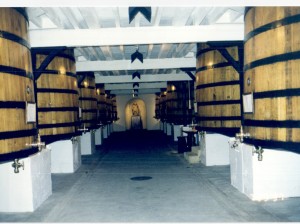
Fermentation Vats at Chateau Mouton-Rothschild
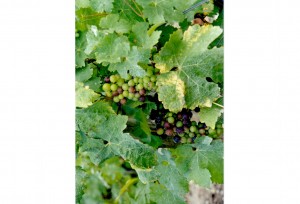
Mouton Rothschild
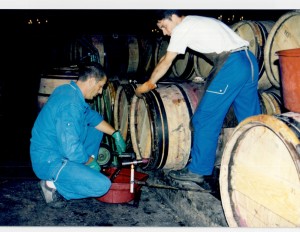
Racking At Mouton
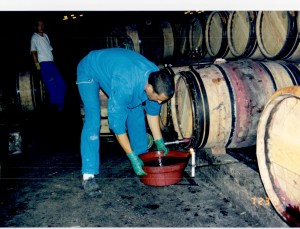
Racking At Mouton
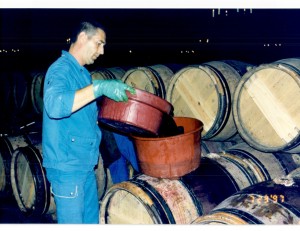
Racking At Mouton
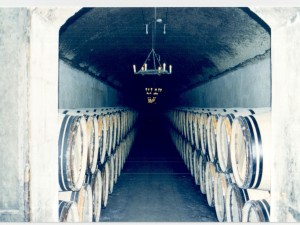
Barrel Room at Mouton
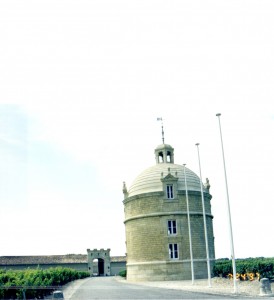
Chateau Latour

